Link to the full course: Part 2 – Core Concepts
Continues from Part 1
(Note: From here it looks like the videos get longer so will have to summarise the most important concepts. I also apologise if the notes seem all over the place as the syllabus looks structured but then Larry Korn’s teaching style is not like that.)
– The reason for not digging/tilling the soil is that different layers of the soil get all mixed up. All of the relationships in the microorganisms, all of mycelium that are going all over the place and the fungi that all gets broken up, there are no plants anymore on the surface, soil is left open to erosion, oxygen comes in. Oxygen or the…not the lack of it but in a natural soil, there is just enough oxygen in the soil to keep the fire burning at the right pace and that is the decomposition of organic matter and if you plow the soil, oxygen comes in and that fire just blows up and the organic matters gets burnt out fast. People have to feed the crops, where before the organic matter/nature was feeding the crops. Natural predators that would take care of the pest would not be there.
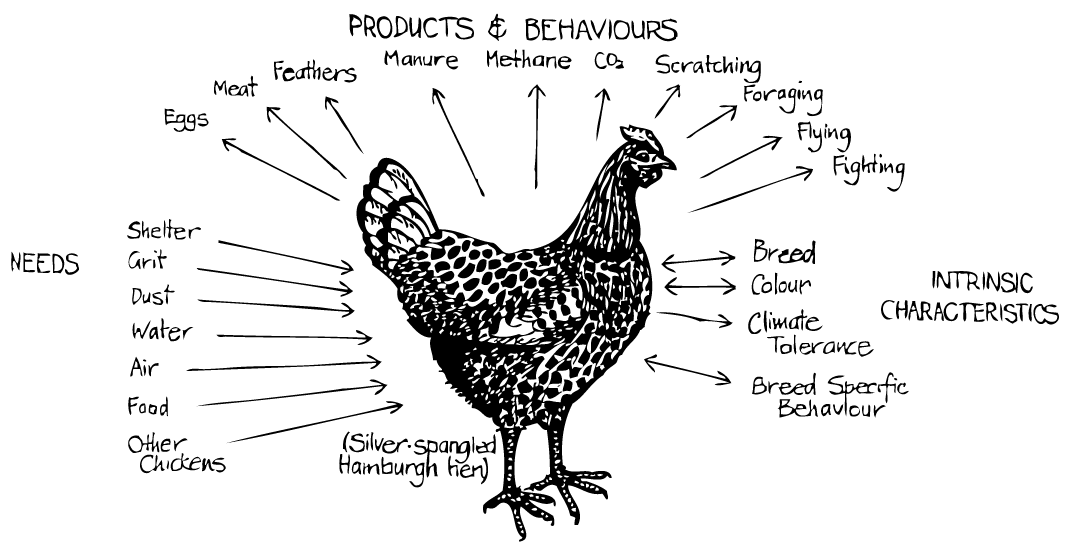
– Multiple functions for everything is key. Chicken coop and greenhouse: Chickens, apart from giving eggs, will process a lot of garden clippings fast and produce manure for the garden. More chickens can produce more heat in the greenhouse to keep the plants going over winter. They scratch the grounds, eat bugs, eat weeds and poop good things. One plant or one element really should provide many functions and then each function needs to be backed up with a lot of features that back it up.
– Talks a lot about Fukuoka’s genius ideas, methods and thinking.
– The best thing we can do is create little bits of Eden.
– When it comes to soil increasing the amount of organic matter in the soil is your number one concern. Make maps of the sun, solstice, wind, topography, land shape, where the water is going. Think about how to catch energy, store it and use it as many times over e.g. heat and rain. Like Comfrey – a great permaculture plant, tough as nails, pretty, attracts insects, grows like crazy, cut it and use the leaves as mulch and it will grow back again and you can do that three-four times a year. It also has roots that go down and penetrates the soil that kind of massages the soil in a way. So, when the roots die, the water and the air goes down in there and so nature plows itself. It’s medicinal and you can feed it to chickens, it’s wonderful and it’s benign, it doesn’t go crazy.

– A guild is a group of plants that perform many functions and they all get along and if you put those in well you are getting all the functions of massaging the soil, improving the soil, getting nutrients up to the surface, you can use it for mulch, it attracts insects, it attracts animals and birds and so forth.
– Start from your doorstep and gradually move out from there. – Nature hates bare soil and wants to cover it up with as much as it can. It puts invasive species like weeds in there to heal that spot. (See my post on weeds for more – https://www.parasuniversal.com/2016/04/3-important-things-i-have-learned-about-weeds/)
– When you put in this early garden, make sure that there is enough stuff that you can harvest right away because the payoff is over there.
– Succession e.g. an empty field will first grow weeds and grasses then shrubs and small fast growing trees then more mature, longer-lived trees until a forest is formed. This could take 40 years naturally but with permaculture you can reduce it to 4-5 years.

Food webs
There are providers (primarily plants) that transform sunlight into biomass. It’s all about carbon because that is the way that life works. The backbone of all living things and then there’s a nitrogen kind of nervous system and oxygen and water comes in, but it’s all carbon. Herbivores eat the plants and then the carnivores eat the herbivores and all of this and all the time they are pooping and dying and they are getting decomposed and so that is the food web. It’s essentially producers – plants. The consumers – animals.
– Ecology as a permaculturlist. Preserve genetic diversity, lots of everything. Respect the right for life of all species to contribute to the ecosystem’s structure. Allow ecosystems to evolve under changing conditions. Use species and habitats sustainably so that the essential life sustaining process can continue and design close systems in which all needs are met right within our design. Use closed systems. If you build it they will come. If you’re working too hard take a step back, basically you’re helping nature do the work.
Soil
1 – The thin and fragile layer that covers the earth that contains and supports life, it’s stratified, and it develops over time. Layers of soil are known as horizons. ‘A’ horizon, the A is the top soil – about 8 inches deep in a natural soil, and B the subsoil – 24 inches. Clay is the smallest, silt bigger and sand is the biggers – forms a backbone and the relationship of how much of each describes a very important feature of soil which is called texture. Humus is the decomposing organic matter – what’s left from a twig and it’s decomposed down part way and is loaded with nutrients and it can hold a lot of water, and the same thing with clay. 2 kinds of soil, 1 – primary soil, it’s formed right in place, 2 – secondary soil that is washed down from the highlands and comes down in the rivers and floods across the river valleys and came from rock that’s higher and was deposited, it’s forest soil and agricultural soil because the primary soils are mainly in the highlands formed in place.
2 – Root hairs reach for the nutrients. Permaculture doesn’t plough because it destroys the soil. Plants don’t decompose the organic matter, the microorganisms do, and when they have got lot of organic matter, water, air, oxygen, they are going to decompose faster. When you think about feeding the soil, what you got to think about is feeding the microorganisms. Fertilisers are not good because it passes through quickly and acidifying the soil which kill the bacteria that help. Then plants don’t let out root hairs because they’re being fed easily. The food doesn’t have as much nutritional value and the plants can’t defend against pests as well. Advises against NPK. Talks about earthworms, red wiggler compost worms and chickens. Chickens won’t run away, they want to be together. Dynamic accumulator (like comfrey, mustard and radish) are plants that go down into the subsoil and effectively mine the subsoil for nutrients and make channels and then they die and they are decomposed and the channel remains, so this is natural plowing, the soil plows itself with roots. There is also a special radish called daikon, Japanese radish puts a root down and it goes straight down like a spike.
Amazon #ads

3 – Soil starts as a rock, lichens help a lot. Keep soils covered and protected to prevent erosion. Accelerated erosion is not natural and that is catastrophic. Building roads causes 90% of erosion but people have wised up now. There is wind and surface erosion out of which the latter is more important as the rain comes down loosens the soil and also moves it downhill. Exposed land causes major soil erosion on flat land. Goes into composting – it’s really for a small scale and lot of work. This way you’re creating a closed cycle by putting it back in the yard. Don’t pile mulch against the tree, do it right at the drip line. Good nitrogen fixers are grass and legumes. The king of soil builders happens to be alfalfa. Recommends ploughing on the contour so the water doesn’t go straight down. Talks about hugulkultur. As old as the tree is when it dies, that’s how long it’s going to take to break down the trunk.
4 – If you just take a pile of leaves and let it break down it may take 2-3 years but it has more nutrients than in carefully mixed up compost, only place that you could go wrong with compost is let it get too wet and it becomes anaerobic. 10 main classifications of soil. Fungus – is one cell after the other connected in a long arm, that goes everywhere for hundreds of miles. Plants send out a message through the root system of what they need, and the fungus relay the message. 1 tablespoon of top soil has billions of microorganisms and in one tablespoon of top soil has 20,000 different types of bacteria. Even in places where nothing can grow the seeds are going all over the place and there is always a rejuvenation possibility. Most temperate soils, the water goes down and then it hits a hard place and goes that way. While in arid soils you get a rainfall and it goes down and then it evaporates out the top. It comes down, dissolves minerals and you get these molecules and salts and then they get deposited as the water can evaporate out the top but the salts can’t, so the salts collect in the top part of the soil – called a caliche layer.
5 – You never want to leave soil uncovered.

Sheet mulching – Cardboard has become popular for it. Use regular mulch under the cardboard and 6 inches of stuff on the top like straw preferably in fall/autumn. People are getting rid of lawns as they take up too much water, chemicals are needed etc. It deprives the weed of light and cardboard or newspaper decomposes in time. You can even use your jeans (clothes) as long as it doesn’t have toxins.
Water – 70% of the Earth’s surface is covered with oceans and seas. 331 million cubic miles of water, salt water. 3% is freshwater that we need because plants hate salt water, three-quarters of the 3% is locked up in glaciers and the polar caps. Half of the rest that’s left is tied up in the clay particles that might be 2000 feet deep in the Earth’s crust. 0.375 of the water that’s out there is available as freshwater. Desalinating water takes a lot of energy and after the water is purified there is by product which you can’t just throw away because there is no away. Soils, aquifers and ponds store the water we need. The soil is the best filter, organic matter even buffers the pH. Use chemicals that would be good to use while using greywater. He’s never heard anyone getting sick by using greywater. It’s better to do this has it takes a lot of time, money, energy and resources to just let the water go back in the drain. You have to try to keep and use the water as much as you can before it leaves. E.g. – from roof top to pond where you can raise fish, attract wildlife and use to water plants. Everyday we’re flushing our toilets using gallons and gallons of treated water. To minimise water use we can collect the shower water (grey water) and use that to flush. We want to keep water on the property for as many uses and as long as we can. Other ideas are making shower heads smaller and putting a big brick in the toilet cistern so it doesn’t really fill up totally every time. If it’s yellow let it mellow and if it’s brown flush it down. Try to slow down the flow of water by added berms and swales. Plant native plants and the stems will slow down the flow. Rain run-off formula – 1000 square feet of capture space and 1 inch of rain = about 550 gallons.
Guild planting – Group of plants that provide multiple functions and are usually around trees. Nitrogen fixing plants to improve soil, insect attracting plants for pollination and to manage the unwanted bugs. Spiders show the health of the ecosystem. Paths are better weedy than bare. Never pile stuff up against the trunk and don’t water near the tree, look for the drip-line where the edge of the leaves end and water around that area.
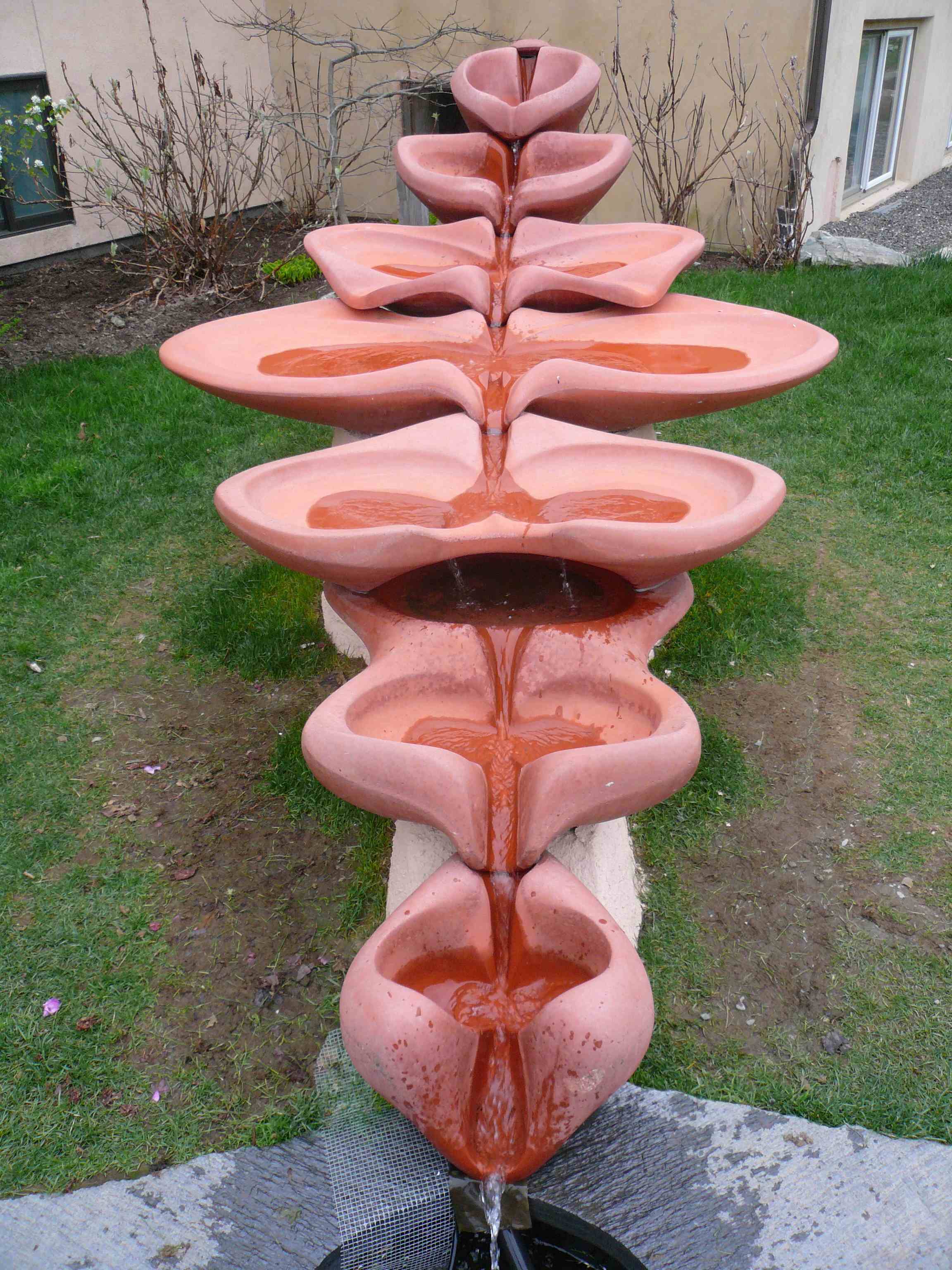
Water + Climate – If you have water at the bottom of the hill, you can harvest wind to pump it up. Keep the water on the land and have it soak in and depending on the contour of the land. On flat lady swales have no purpose but ponds do. Find ways to get water or store it on your property. Talks about flow-forms where the water goes downhill in figure 8s. In flow forms water get oxygenated really well. Frost will not form under eaves or under trees it forms in open areas. When creating windbreaks always allow 30% of the wind to pass through because otherwise the wind turbulence on the other side will disturb the area. Fedges- fruit hedges.
Aquaculture: Importance of keeping closed systems, grey water systems.
5 ways of Catching and Conserving water as high as you can on the property.
1 – Save it in the soil as it’s the best place. Ponds give you the benefits of wildlife.
2 – Using the contours of the land or swales to slow it down.
3 – Do nothing farming.
4 – Use dense plantings.
5 – Mulching. Locate plants according to water needs.
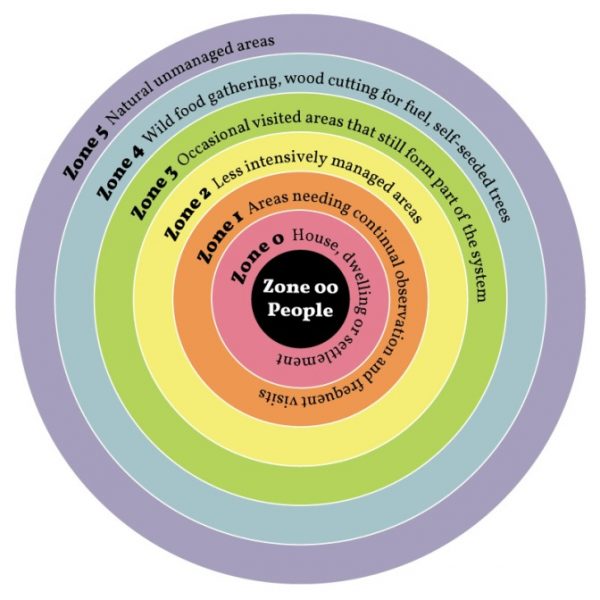
Zones
Zone 0 – The house where we live and uses the most energy.
Zone 1 – Right outside the door where we pass all the time and has sheet mulching.
Zone 2 – You pass less than zone 1, maybe have chickens and it’s more rougher, less sheet mulching.
Zone 3 – you’re hardly going to spread compost or mulch and you just make visits, grain/potato fields and pigs.
Zone 4 – Things like an orchard that you only need to prune once a year, maybe livestock like sheep.
Zone 5 – It’s wild-land. You almost never go there but when you go you can see how nature works with itself. (Tour of someones permaculture set up)
Amazon #ads

– Energy: Wind – think of the hardest winds you’ll get and design accordingly. Snow. Precipitation. Sunlight – Find out the angles of summer sun and winter sun so the plants can shade areas in summer and give the area winter sun. Fire. All these need to be considered for the sectors.
– Winter squash is a miracle plant that keeps for around a year.
– Build places that increase habitats for other living things. Get plants that attract insects and bring minerals up from the ground.
– Succession planting example: Barley crop that’s planted in the Fall and matures in the Spring, then the rice crop which is also planted in the Fall but stays dormant until the Spring and then it just comes up.
– Lawns represent status in the subconscious of some people. Who has the best lawn? It’s kind of ego sort of thing.

Sustainable building materials/Green building – Cob is a monolithic homogenous mass of earth, sand and straw that is typically sculpted from the foundation up. It will be characterised by this sculptural curvilinear quality because it is just like modelling clay. (Talks about construction, material, electrics, earthen floors etc). Cellulose is good for wall cavity insulation. Earthen floor example: one part clay, four parts sand, one part by volume of chopped straw all mixed up and then trawled nice and smooth and then it’s completely saturated with linseed oil and then there is a thin film of beeswax across the top.

Patters
Different patterns modify energy in a system e.g. spiral increases edge and and offers many growing niches. Some more examples below.
– Branching pattern: is very effective at accumulating things and channelling and dispersion.
– Spiral pattern: Herb spiral takes advantage of stacking and it’s also creating diverse habitat.
– Keyhole: Where you plant in a circle and the circle has a walkway to the centre so that you can get to all the plants with the tallest ones at the outer edge. Once you get the idea you can have many keyholes along all kinds of shapes.
– Think of trees first as the backbone of your design.
– Fortress plants like comfrey block the spread of invasive species like crab grass.
– Bamboo has many many uses. Habitat, food.
– Nurse plants are nitrogen fixers and they give shade to help other plants to get started.

Climate regions
– Tropical: only 20% to 25% of the nutrients are stored in the soils, there is almost no humus, there is almost no organic matter in the soil. Everything that comes into the soil is washed through very very quickly. There is no mulch basically, it’s digested immediately by the microorganisms, but let’s just keep going with tropical. With the plants, the plants, well, the soil is only holding about 20% of the nutrients, the plants are holding 80% of the nutrients, so the nutrients are all tied up in the trees and in the shrub itself. use nitrogen fixing ground covers, pay attention to the nutrient cycle and take advantage of the fact that in the tropics the plants grow really tall, and really fast, so we have – we are able to stack plants very effectively in the tropics.
– Temperate: a lot of the nutrients is stored in the soil and organic matter. a natural mulch develops either both in the grasslands and in the forest. Only 5% to 10% of the nutrients are held in the trees and shrubs and grasses, most of it is in the soil. You do are able to get deep rooted trees and you get deciduous species (plants that loose their leaves in the winter). High chance of being able to store water on the surface, it’s mostly flowing somewhere and holding it is not easy. Seasonal growth, day length changes. Sometimes too cold, light can be a problem, fires, frost, floods etc.
– Arid: lot of clay mineralogy so it can hold a lot of nutrients. Low organic matter. Salty. No mulch surface. Plants have adapted to hold in moisture. Root systems that go straight down to look for water. Easy wind and water erosion. Good to use drip irrigation as overwatering plants can rot the roots. Extreme temperatures with dryness.
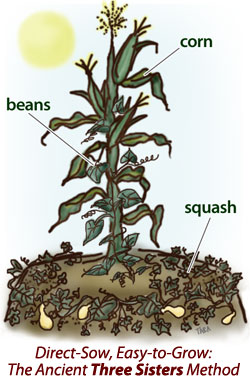
Three Sister Guild
Corn, beans, and squash. Native Americans always inter-planted this trio because they thrive together, much like three inseparable sisters.
5 Stages.
1 – Observation: What do you have to work with, conditions, soil types, local wildlife, rainfall by month, regulations etc.
2 – Visioning/Brainstorming: Note down all types of ideas. Whats the new landscape going to look like. What is the potential. What materials to use. Who will use it. What has happened in the past. Ecological goal is to increase biodiversity. Try to use what is on the site. You want to enhance water and soil quality and reduce work.
3 – Planning: What are you going to do with water systems and storage. How are you going to attract wildlife. Setting up zones and sectors.
4 – Development: Sketches have to have scales and north compass. Plan how to do the work, preferably from the house outward. Take care of your personal needs and do zone 1 first. Appropriate work for the seasons.
5 – Implementation: Heavy landscaping first. Then soil improvement. Tree planting.

–Seed bombs/seed balls: Used by guerrilla gardeners too. You wrap seeds in clay pellets and when you scatter them they can sit for a long, long time if they don’t have the right conditions, but when they do have the right conditions then the clay melts and you have the nutrients from the clay and the protection from the predators.
– Apical meristem: tips of the plant, both the tip of the shoot and the root, and is a region of actively dividing cells.
– Espalier: horticultural and ancient agricultural practice of controlling woody plant growth for the production of fruit, by pruning and tying branches to a frame. Good to grow lots of fruit, good for shading.
– Patios store heat which is not what you want. Shade to make it cooler and plant such trees etc.
Amazon #ads

– Guerrilla gardening: When you see that empty lot you don’t even find out who it belongs to, just go and start a garden. These gardens become so entrenched and is already a part of our community, and it becomes a big deal and eventually that garden does continue to be a community garden through some kind of mediation or settlement. It’s not exactly legal exactly but sometimes that’s the way progress is made. (Disclaimer: Permaculture does not endorse such behaviour … wink wink).
– Cats love bare soil to dig up and pee on. Mulch will deter them. Paras note: Trust me they love bare soil, my girlfriend has planted succulents a few times and the cat just digs it up and pees everywhere.
– Rabbits are ideal for city as they do everything like chickens only less scratching.
– Chickens need to eat some gravel to digest, they need to scratch around and they produce eggs, they compost, they eat the vegetables scraps and then they poop it out and if you have them out in the yard it’s great because it actually improving the area.

Social Applications Guidelines
1 – Assume the positive about others. If someone is sloppy they might not be aware or have something else going on.
2 – Make the problem about the condition not the person. Problem is you’re always late vs. I have a problem with lateness.
3 – Be curious before you get angry.
4 Doors when getting Critical Feedback to be Dealt with in Sequence
1 – Will I even open myself to hear it?
2 – Is it true or accurate? Or partially true? (This is where the door gets shut and instead we try to prove that we are not bad)
3 – What do I do about it?
4 – Does this mean I am a bad person. Never let it be about your worth. You choose not to be ashamed about it, they took a risk to say something. You both don’t need to agree and it’s fine. Keep repeating in your head ‘I am a good and worthwhile person weather or not this is true’. Criticism is a deeply tragic expression of ones unmet needs.
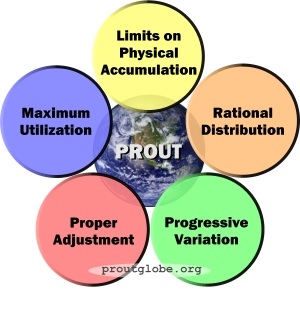
Progressive Resource Utilisation Theory (PROUT) – Is a political framework based on Neohumanist values which aim to provide “proper care” to every being on the planet, be that human, animal or plant.
– 5 Fundamental principles:
1 – There should be no accumulation of wealth without the permission of society.
2 – There should be maximum utilisation and rational distribution of the crude, subtle, and causal resources.
3 – There should be maximum utilisation of the physical, mental, and spiritual potentialities of the individual and collective beings.
4 – There should be a well-balanced adjustment among the crude, subtle, and causal utilisation.
5 – Utilisation vary in accordance with time, space, and form; the utilisation should be progressive.
– Talks on making biodiesel. How a facility that dried fruits used to pay to have the sugar water removed changed their thinking and started making ethanol as all you need to make ethanol is sugar water.
– Shop from Co-ops or stores that source locally, don’t package their products and you either have to bring your own bag or they use recyclable containers donated by locals. People can volunteer and for example every 2 hours work earns them 2% discount.
– Biodynamic farming: If you plant above ground fruits and vegetables as the moon is going up, specifically in the second quarter, you are going to get a higher level of minerals in those, and if it’s a protein food like the grains you are going to get higher levels of proteins.
Part 2 – Core Concepts
– Introduction
– Ethics
– Principles
– Ecology
– Soils
– Water
– Water Discussion
– Water + Climate
– Aquaculture – Suburban Permaculture Tour
– Soils + Misc
– Suburban EcoVillage Tour
– Design
– QA + Review
– Plants
– Fukuoka
– Urban Permaculture
– Social Applications
– Progressive Resource Utilization Theory (PROUT)
– Rural EcoVillage
– Rural EcoVillage Tour
– Food Cooperative Tour
– Organic Farm Tour
– Interview
– Lectureicipants
– Larry Korn Interview 01
Other courses which require purchase
– Greener Home
– Aquaponics
– Building a Green Property
– Chickens
– Permaculture Basics
– Maximum Gardening
– Prolonging the Harvest
– Mindfulness and Meditation
– Working with wildlife
– Regenerative Ecological Design
– Communication
– Companion, Guild and Succession Planting
– 60 Days to a Healthier Life
– Compost: The essential guide
– Graywater Reuse
– Mediation Fundamentals
– Mulch: A Permaculture Marvel
– Rainwater Catchment
– Soil and Garden Beds
– Suburban Permaculture Course
– Water Earthworks
Amazon #ads




